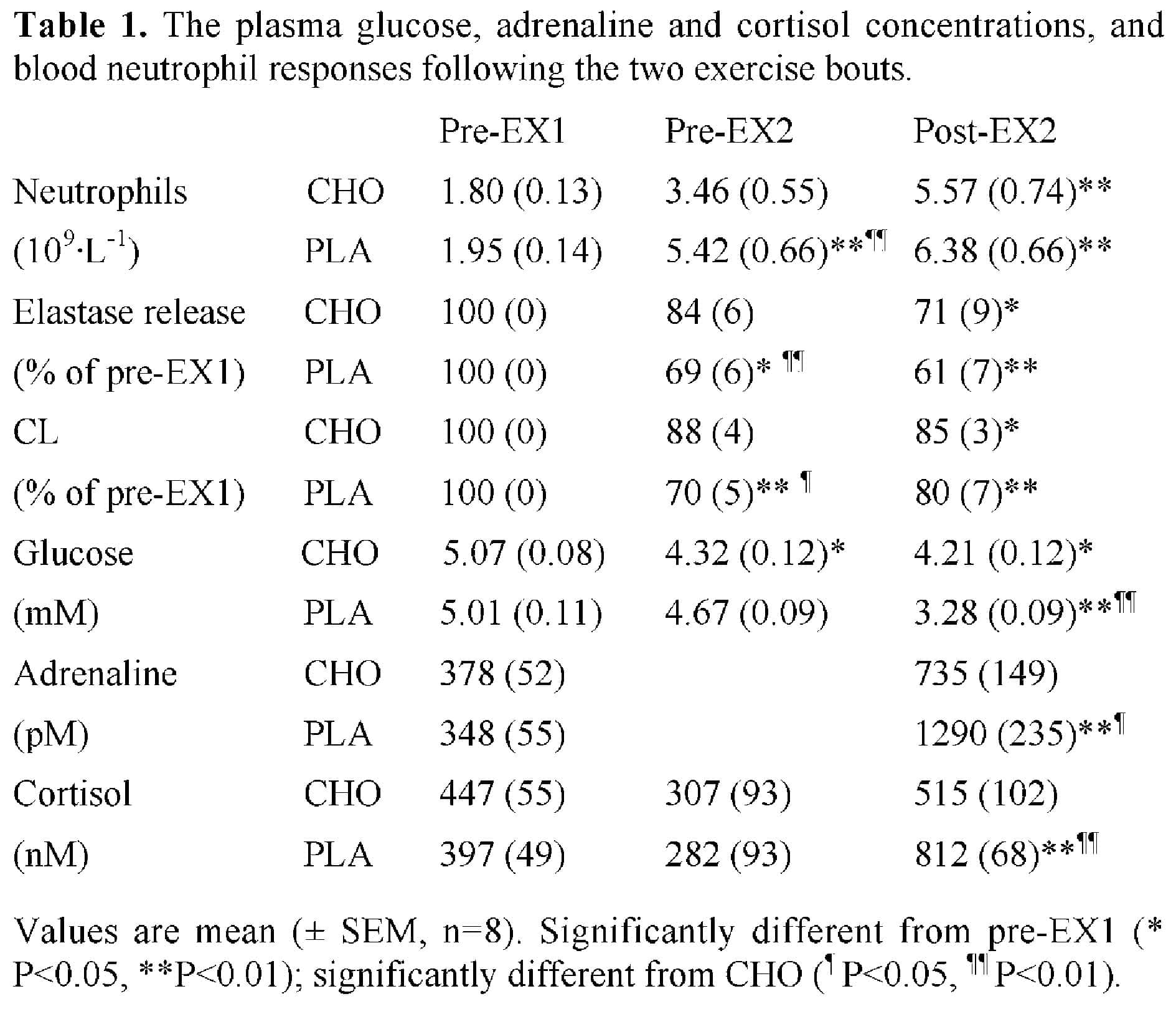Prolonged exercise temporarily alters the number and functions of circulating neutrophils and the changes may last for several h after exercise. When two bouts of exercise are performed on the same day, the observed changes are even greater (Boyum et al. 2002). The aim of the present study was to compare the effect of carbohydrate supplementation during the first exercise bout (EX1) on neutrophil responses to a second bout (EX2) of prolonged cycling.
With the approval of Ethics Committee of Loughborough University, eight males (age 29.6 ± 1.5 years, body mass 73.1 ± 1.7 kg, Î{special}J{special}max 48.7 ± 2.1 ml kg-1 min-1; means ± S.E.M.) performed two bouts of 90 min cycling (EX1 started at 09:00 and EX2 started at 13:30) at 60 % Î{special}J{special}max after an overnight fast on two occasions, separated by at least 4 days in a counterbalanced order. Subjects consumed 500 ml of a carbohydrate (10 % w/v glucose; CHO) or placebo (PLA) beverage at 5 min pre-exercise (500 ml), and 250 ml every 20 min during the first exercise bout. Water ingestion was allowed ad libitum after the first exercise bout. Blood samples were collected by venepuncture at pre-exercise and post-exercise for both bouts. Haematological analysis was performed using an automated cell counter. Plasma hormones concentrations were determined using ELISA kits. Phorbol myristate acetate (PMA)-induced respiratory burst was measured using a chemiluminescence (CL) assay (Knight Scientific Limited, Plymouth) and lipopolysaccharide (LPS)-stimulated neutrophil degranuation was measured as described by Robson et al. (1999). Results were analysed using a two-factor (trial X time) repeated measures ANOVA with post hoc Tukey tests and paired t tests applied where appropriate.
The ingestion of CHO during EX1 significantly attenuated the increase in circulating neutrophil number and the decrease in LPS-stimulated elastase release and PMA-induced CL per neutrophil in the recovery period after EX1 (Table 1). On PLA, the plasma glucose concentration was significantly lower (P ▓le│ 0.01) and the adrenaline and cortisol concentrations were significantly higher (P ▓le│ 0.05 and P ▓le│ 0.01, respectively) at post-EX2 compared with CHO though neutrophil number and function were not significantly influenced.
These findings suggest CHO feeding during a first exercise bout attenuates stress hormone responses to a subsequent bout of exercise but does not appear to markedly reduce subsequent exercise-induced suppression of neutrophil function.

